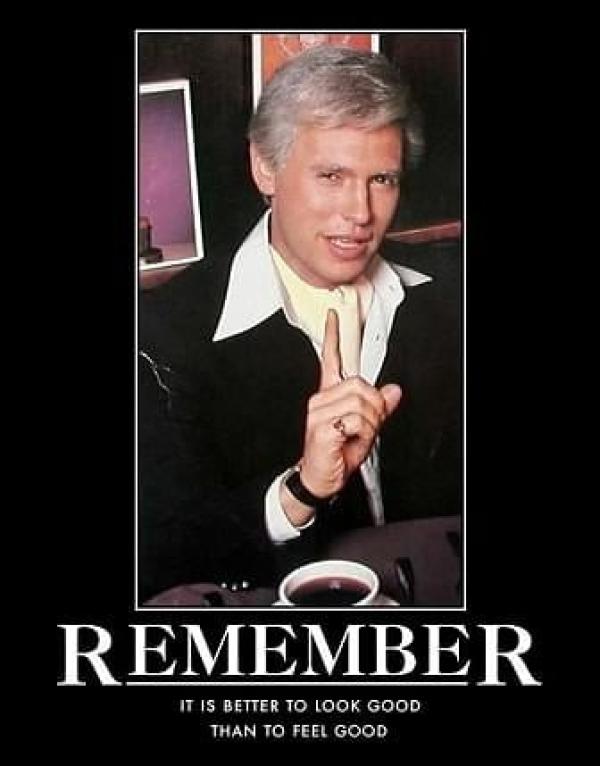By Brian A. Schroeder, the founder of OCIO Monitor, a specialty consulting firm that provides due diligence of investment consultants and outsourced chief investment officers.
In a world where trillions are always at stake, performance presentation can be the difference between staying hired or losing accounts. It creates a powerful incentive to use hard-to-detect tricks to dress-up performance. These tricks are pure genius! If they were not so unethical, the creativity would be laudable.
The tricks are employed by well-heeled investment consultants and OCIOs artfully skilled in performance presentation. With a technical vocabulary and thick reports loaded with graphs, charts and statistics, they ply their trade in new business presentations and quarterly board meetings. In between meetings they may take you to a professional sports game, sponsor your charity event or host 5-star dinners.

Let's review some actual examples that OCIOs and investment consultants have used that made their investment advice appear more profitable. And yes, each of these performance tricks were done by fiduciaries under ERISA.
NOTE: None of the following examples were discovered by the client. That shows how difficult these techniques are for laymen to discover and why they are employed more often than you think.
TOTAL PLAN BENCHMARK MANIPULATION
Typically, the first line of performance data an OCIO or investment consultant presents is total performance for 3 months, YTD, 1-year, 3-years, etc. Directly below that is the policy index, plan benchmark, or policy target. The names differ, but they are the same.
OCIO's and investment consultants want the top number better than the bottom number. There are two ways to do this. The first is to do a good job and generate out-performance. The second is to hobble the total plan benchmark and slow it down.
Since periods of underperformance are inevitable, the temptation to slow the benchmark is also inevitable. I have so far discovered four techniques in my due diligence reviews. In one review, an OCIO actually used three of these techniques with a single client.
The first technique is benchmark linking. It is the practice of changing the total plan benchmark to reflect changes in the strategic asset allocation. Because the total plan benchmark mimics the changing strategic asset allocation, the client never learns if their OCIO's or investment consultant's asset allocation strategy adds value. You would be shocked at how many times my studies reveal that had the original asset allocation strategy never changed, except for rebalancing, the performance would have been far better.
The second technique is mismatched constituent indexes. I usually see this in fixed income and alternatives. For example, your asset allocation includes foreign and/or junk bonds, but within the total plan benchmark it is 100% domestic, investment grade. In alternatives, I have seen private equity, hedge funds, and real estate compared to strawman benchmarks.

The third technique is to underweight an asset class in the investment policy statement (and total plan benchmark) and then invest "normally." In one particular due diligence, the OCIO invested according to their mean-variance projections, but the total plan benchmark had a consistently smaller allocation to public equities. It is akin to a permanent tactical overweight. Imagine how that helped relative performance comparisons since 2009!
The last technique is blatant manipulation. And I have encountered two types. The first is to opportunistically change it on an ongoing basis. One investment consultant was changing the total plan benchmark quarterly depending on capital calls for alternative managers. They kept switching between the target allocation and the actual allocation; whichever slowed the total plan benchmark the most. In just one year this manipulation created over 300 bps of out-performance out of thin air.
The second blatant manipulation is retroactively changing the total plan benchmark. This can be done by altering previous weightings and index choices. One OCIO actually went back in time twice changing both weightings and indexes. Despite perennially bottom-quartile performance, the manipulation kept them ahead of their total plan benchmark.
STRAWMAN BENCHMARKS = PHANTOM ALPHA
Investment consultants and OCIOs love picking winners. Hiring an active manager that subsequently delivers out-performance makes everyone look and feel good. But several times I have seen managers compared to easy-to-beat, strawman benchmarks. Here are a few actual examples of creating phantom alpha using strawman benchmarks.
Following the 2008 GFC, one pension plan bought into a distressed debt fund. They were junk bonds of "fallen angels" and real estate-backed bonds that were formerly investment grade. The investment consultant that recommended the purchase then compared the performance to an investment grade index, thus huge phantom alpha following the recovery.

In one 401(k) plan, a stable value fund was compared to 90-day T-bills. The out-performance was consistent and substantial. However, in a universe of stable-value funds, its long-term performance was in the 90th percentile.
One OCIO fired a managed futures manager and split the proceeds between two new managed futures managers. The terminated manager had been compared to a commodities index. The two successors were then compared to 90-day T-bills and thus looked like huge alpha generators. However, the terminated manager then performed far better than the replacements. The fire and hires appeared profitable, but the opposite was true.
BOGUS PEER UNIVERSE - Yes, this really happened.
A large, multi-employer pension plan fired its investment consultant in 2006 after just 3 short years, and following the election of a new slate of union officers. The new investment consultant cleaned house replacing the recently hired managers. Then, in July 2008 they reallocated over 10% of the portfolio from investment-grade bonds to equities and leveraged real estate. The "risk on" timing entering the 2008 GFC could not have been worse!
The performance in 2007, 2008, and 2009 was dreadful due to the asset allocation changes and the newly hired managers' alpha. (Plus, they missed a substantial alpha rebound from the fired active managers.) Yet, the investment consultant reported they were median in their peer universe. The fired investment consultant stayed in touch to remind them how good their performance would have been had they not been fired. The fired investment consultant then ran their "median" performance through their peer universe and determined this pension plan was actually in the 90th percentile for that 3-year period.
It turns out the current investment consultant did not disclose the details of their particular peer universe. It was a peer universe of just their clients. Yes, you read that correctly.
And to this day, the investment consultant that got caught trying to pass off a bogus peer universe still works for that pension. I suspect the newly elected officers that handpicked the new investment consultant chose to bury the revelation to avoid a fallout in the next election.
"CLEANING HOUSE"
One of the benefits OCIOs and investment consultants enjoy when using active investment managers is they occasionally serve a very useful purpose. You see, when performance is down and the client is unhappy, a sacrificial pound of flesh can salve the wound. And serving up the heads of active managers is better than having your own head cut off.

It is no coincidence that I often see a flurry of fires & hires after times of market volatility. Firings, searches, and interviewing are great distractions and show you are doing something. Plus, there is the added bonus of removing the eyesores of poor past performance by no longer including those managers in future reports. Isn't it convenient to just erase poor hiring decisions and sweep them under the rug?
If you see your OCIO or investment consultant cleaning house, pay extra close attention. After all, they are usually the one that hired the managers in the first place. Be sure to demand that the subsequent performance of those terminated managers is tracked in comparison to the replacement managers. This will help you determine if the firings were a prudent exercise or a self-serving distraction and erasure of poor performance.
COGNITIVE DISSONANCE IN THE BOARDROOM?
Over the past 12 years of performing due diligence for plan sponsors of their 3(21) or 3(38) investment consultants, I have more than once encountered cases of cognitive dissonance. This is perfectly understandable as this 12-year bull market means the client likely earned their return objective even if they received poor investment advice.
Although I present objective and quantitative analysis, some trustees just don't believe they received poor advice or were victims of reporting tricks. Mark Twain was right! --->
The disbelief likely happens when the client has been "spinned" over such a long period that everything is/was and always will be great, that their advisor practically walks on water. Admitting to being fooled is hard.
PROFESSIONAL MONITORING IS THE PRUDENT SAFEGUARD
Non-discretionary investment consultants and OCIOs can be crafty at performance presentation. Even being a fiduciary under ERISA does not halt the attempts. After all, the chance of being caught is minimal because clients are laymen and want good news. Why ever question good news?
It takes a professional monitor to ensure you are receiving a fair and honest performance presentation. OCIO Monitor should be your first choice for fiduciary performance assurance. One-time and ongoing reviews are available.
About the Author:
Brian A. Schroeder is the founder of OCIO Monitor, a specialty consulting firm that provides due diligence of investment consultants and outsourced chief investment officers. He has over 30 years of investment experience, as both an institutional manager and consultant.

He is the leading objective and unbiased due diligence provider on behalf of institutional plan sponsors. He has worked for pensions, foundations and endowments with assets up to $15 billion. Besides quantitatively determining their value-add and discovering behavioral finance heuristics, he is likely the leading expert in benchmarking and performance reporting transparency. He has been consulted by academics and recently presented to the Securities Exchange Commission’s Division of Exams’ investigators on how to spot performance reporting fraud when conducting routine firm inspections.
Schroeder has spoken at the International Foundation’s Trustee Master's Program, the Investments Institute, and the ISCEBS Symposium. In July 2014, Benefits Magazine published his article “Multi-balanced Model: The Missing Link in Investment Approaches?” and, in May 2019, “3 Simple Strategies for Adopting a Passive Investment Consulting Approach” and, in July 2020, “Investing in Response to the Covid-19 Response.”
His analysis is novel by quantitatively scoring the value-add of investment consultants and OCIOs in their five main duties- strategic asset allocation, tactical asset allocation, rebalancing, active manager hiring, and active manager firing.
Schroeder has a Bachelor of Arts degree in economics and a Master of Science degree in financial analysis. He served for 3 years on the Riverton, Utah Committee for Economic Development and is a volunteer at the Salt Lake City YWCA.




